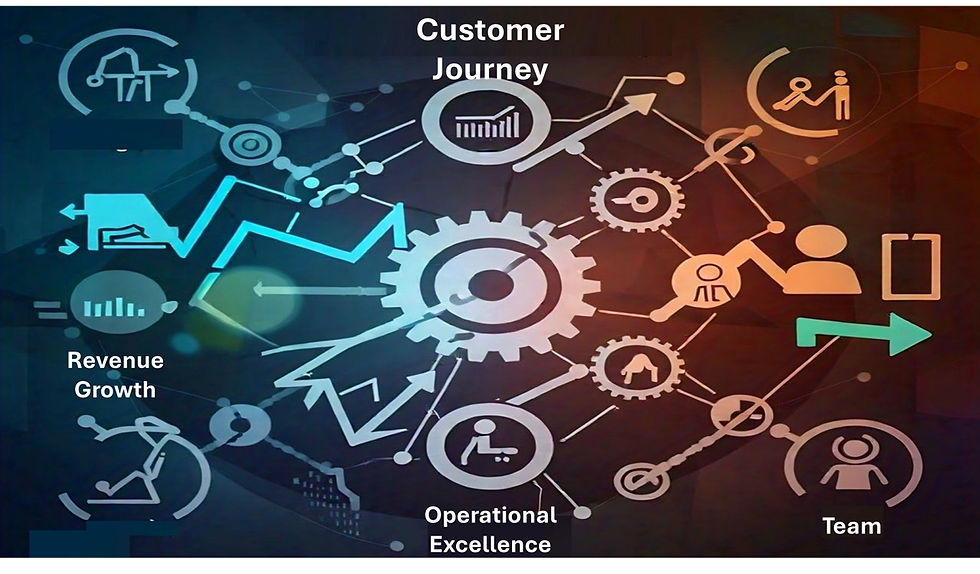Service Productization Part - 1: Why Productize? Understanding the Benefits of Converting Services into Products
- Parag Agarawal - unconsult
- Jun 16
- 2 min read

In this first part of learning productization of services we will know why one should consider converting services into products. Why is this such an important deal and how it can benefit your organization.
Before we get into this, let me acknowledge that a lot of people do this already, but without knowing the basics and following the right steps.
𝗪𝗵𝘆 𝗣𝗿𝗼𝗱𝘂𝗰𝘁𝗶𝘇𝗲?
We talked about it in curtain raiser. Productizing your services can be a game-changer for your startup, here’s why
𝟭. #𝗦𝗰𝗮𝗹𝗮𝗯𝗶𝗹𝗶𝘁𝘆: Product by design are to be made in duplicate, they are mostly supposed to be produced in quantity and are supposed to be same in design, and performance, every time. Unlike custom services, which depend on individual effort, products reach a broader audience with less incremental cost.
𝟮. #𝗖𝗼𝗻𝘀𝗶𝘀𝘁𝗲𝗻𝗰𝘆: A product offers a uniform and consistent experience to every consumer who chooses to use it. A product and its outcome do not depend on who’s delivering the service. The Consumer has fair idea what to expect every time.
𝟯. #𝗘𝗳𝗳𝗶𝗰𝗶𝗲𝗻𝗰𝘆: A standardized product means a streamlined operation. It reduces complexity and helps cut down on costs of delivery. Imagine a repeatable process that doesn’t require starting from scratch every time.
𝟰. #𝗥𝗲𝘃𝗲𝗻𝘂𝗲 𝗚𝗿𝗼𝘄𝘁𝗵: Products offer a tangible value; they can be branded and can command premium as the outcome is defined. A successful product can attract more customers, leading to more revenue opportunities. A successful product can be produced in different locations expanding the reach, similarly a successful standard service can be delivered across different locations with same outcome
𝗦𝗼𝗺𝗲 𝗥𝗲𝗮𝗹-𝗪𝗼𝗿𝗹𝗱 𝗘𝘅𝗮𝗺𝗽𝗹𝗲:
Think about how #SaaS companies like #Zoom or #Slack have grown. They started with core services but turned those services into scalable products. By creating a product that could be sold repeatedly without additional customization, they were able to grow rapidly and serve millions of customers.
#Airtel and #Vodafone for eg, a Telecom service, sold as a product of 199 / 299 / 749, services bundled into a product around the core service of making people communicate. Over a period, the core service may change, like here, from calling to data. Earlier core service was ability to talk, now it is given, now what is being sold is amount of data per day or per month.
#Indiamart / #Alibaba is yet another example of productization of services. A simple buyer meets seller service converted into an outcome-based product with different levels of outcome, suiting the needs/pocket for customer. A lot more add-ons products (services) created around the core service to deliver the extra benefit to the customer.
In all the above cases because they have a product on offer, they have been able to change the delivery and expand consistently. And it is easy to increase prices for the product.
𝗘𝗻𝗱𝗴𝗮𝗺𝗲:
So, why productize? It’s about making your services scalable, consistent, and efficient, and opening the door to new revenue streams. Productization of service is not just some Jargon — it’s a strategy for growth.
#Business #Startups #Entrepreneurship #Innovation #Growth #Leadership #Marketing #Strategy #DigitalTransformation




Comments